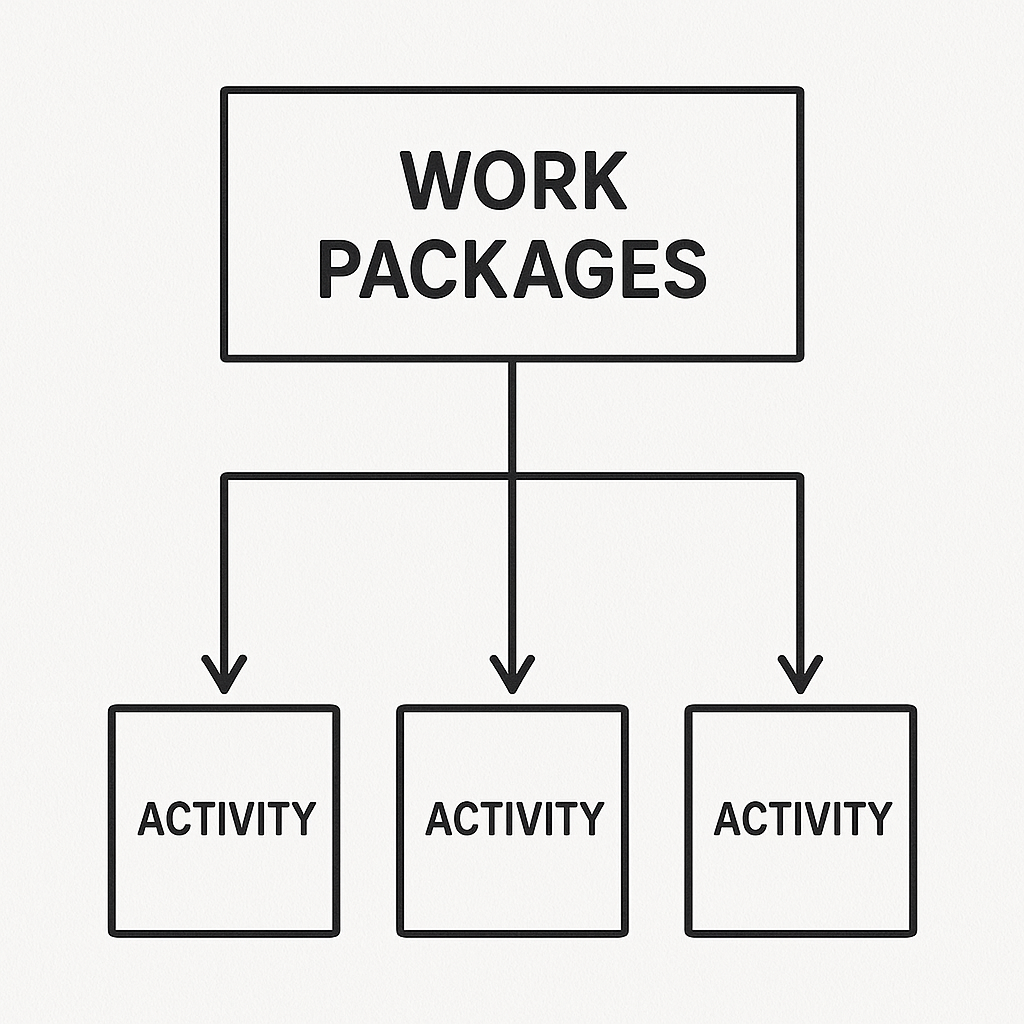
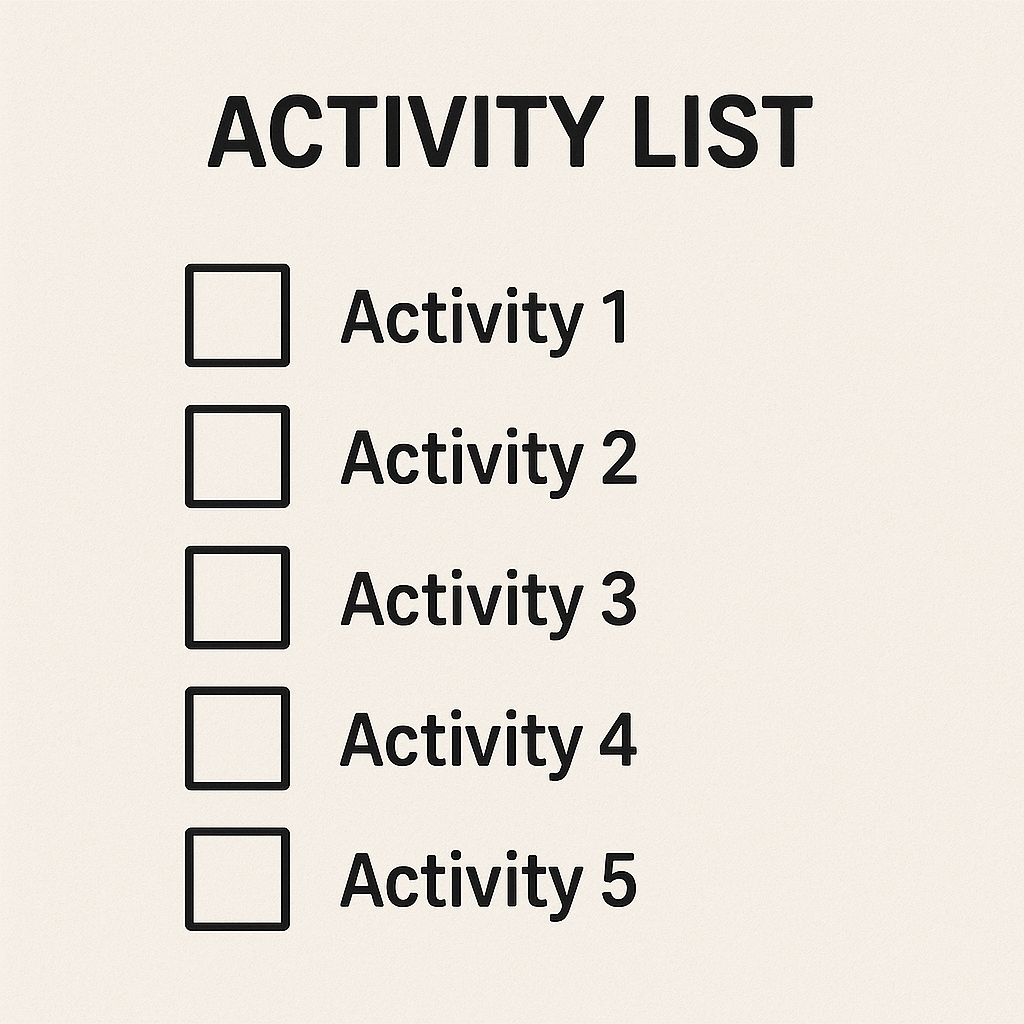
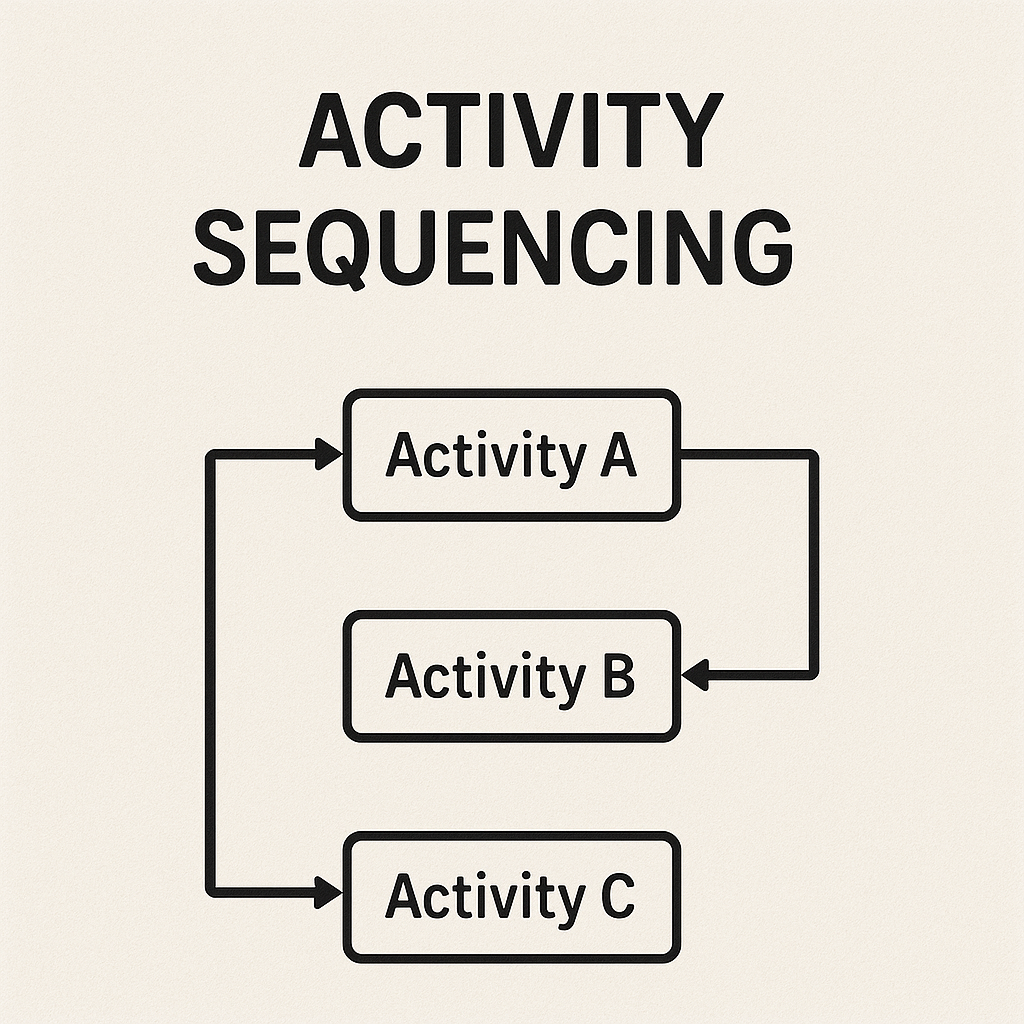
After decomposing the work packages into activities, the next step is to sequence those activities based on their successor, predecessor dependencies to arrive at the activity sequences….
Activity sequencing involves determining the order in which project activities should be performed to achieve project objectives efficiently.
The 4 types of dependencies among tasks
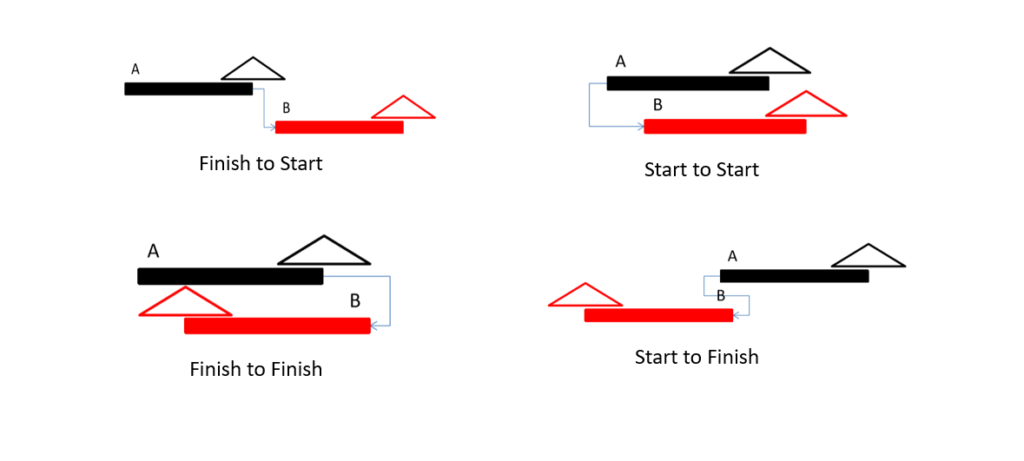
In project management, there are four main types of dependencies among activities, each of which describes a relationship between two or more project tasks. These dependencies help determine the sequencing of activities and the order in which they should be performed. Here are the four types of dependencies:
- Finish-to-Start (FS): This is the most common type of dependency, where the start of one activity depends on the completion of another activity. In other words, Activity A must finish before Activity B can start. For example, pouring concrete (Activity B) cannot begin until the foundation is fully excavated (Activity A) and finished.
- Start-to-Start (SS): In this type of dependency, the start of one activity depends on the start of another activity. Both activities can start simultaneously or with a time lag. For example, two teams may need to start their respective tasks (Activity A and Activity B) simultaneously to ensure that they can coordinate their work effectively.
- Finish-to-Finish (FF): This dependency means that the completion of one activity is dependent on the completion of another activity. Both activities must finish at the same time or with a time lag. For example, the testing phase (Activity B) may depend on the completion of the development phase (Activity A), ensuring that testing can begin as soon as development is finished.
- Start-to-Finish (SF): This is the least common type of dependency, where the start of one activity depends on the completion of another activity. In other words, Activity A must start before Activity B can finish. This type of dependency is rarely used in practice and can be confusing, so it’s best to avoid it whenever possible.
Understanding these dependencies is crucial for creating a realistic project schedule, identifying critical paths, and managing project risks effectively. By accurately sequencing activities based on their dependencies, project managers can ensure that the project progresses smoothly and is completed on time and within budget.
Out of these the most widely occuring dependency is ‘finish to start’, followed by ‘start to start’ and ‘finish to finish’
Example from EPC project
Let’s illustrate examples of the four types of dependencies within Engineering, Procurement, and Construction (EPC) projects:
- Finish-to-Start (FS) Dependency:Example: Construction of a Power Plant
- Activity A: Excavation and Site Preparation
- Activity B: Foundation Construction
- Dependency: Activity B (Foundation Construction) cannot start until Activity A (Excavation and Site Preparation) is completed. The excavation must finish before the foundation can be constructed.
- Start-to-Start (SS) Dependency:Example: Installation of Electrical Wiring
- Activity A: Cable Tray Installation
- Activity B: Electrical Wiring Installation
- Dependency: Activity B (Electrical Wiring Installation) can start as soon as Activity A (Cable Tray Installation) starts. Both activities need to start simultaneously to ensure that wiring can be installed promptly once the cable trays are in place.
- Finish-to-Finish (FF) Dependency:Example: Testing and Commissioning
- Activity A: Equipment Installation
- Activity B: Testing and Commissioning
- Dependency: Activity B (Testing and Commissioning) depends on the completion of Activity A (Equipment Installation). Testing can only commence after all equipment has been installed successfully.
- Start-to-Finish (SF) Dependency:Example: Material Procurement and Delivery
- Activity A: Material Procurement
- Activity B: Delivery of Materials
- Dependency: Activity A (Material Procurement) must start before Activity B (Delivery of Materials) finishes. For instance, if materials are procured for delivery within a specific timeframe, the procurement process must begin early enough to ensure timely delivery.
Example from IT project
Here are examples of the four types of dependencies in the context of IT projects:
- Finish-to-Start (FS):
- Example: In a software development project, the deployment of a new feature (Activity B) depends on the completion of coding and testing (Activity A). The feature cannot be deployed until it has been fully developed and tested.
- Start-to-Start (SS):
- Example: In the development of a website, the creation of frontend UI components (Activity A) may start simultaneously with the setup of the backend server (Activity B). Both activities need to commence together to ensure the frontend and backend components are developed in parallel.
- Finish-to-Finish (FF):
- Example: In a data migration project, the validation and verification of migrated data (Activity B) depend on the completion of the data extraction process (Activity A). The verification process can only begin once all data has been successfully extracted.
- Start-to-Finish (SF):
- Example: In a software testing project, the start of documenting test cases (Activity A) may be dependent on the completion of executing initial test cases (Activity B). The documentation process cannot begin until the initial testing phase has started and produced results to document.
In each of these examples, the type of dependency influences the sequencing of activities and impacts the overall project schedule. Understanding and managing these dependencies are essential for effective project planning and execution
Activity on Arrow Diagrams (AOA, Arrow Diagramming Method – ADM)

- Activities are on the Arrows and are connected at the Nodes
- Good for simple projects
- Can show only Finish to Start Dependencies
Activity on Node (AoN, Precedence Diagramming Method (PDM)

- Can show all the four types of dependencies (FS,FF,SS,SF)
- Most widely used as it can scale very easily
- Underlying logic for most of the scheduling softwares
Critical Path
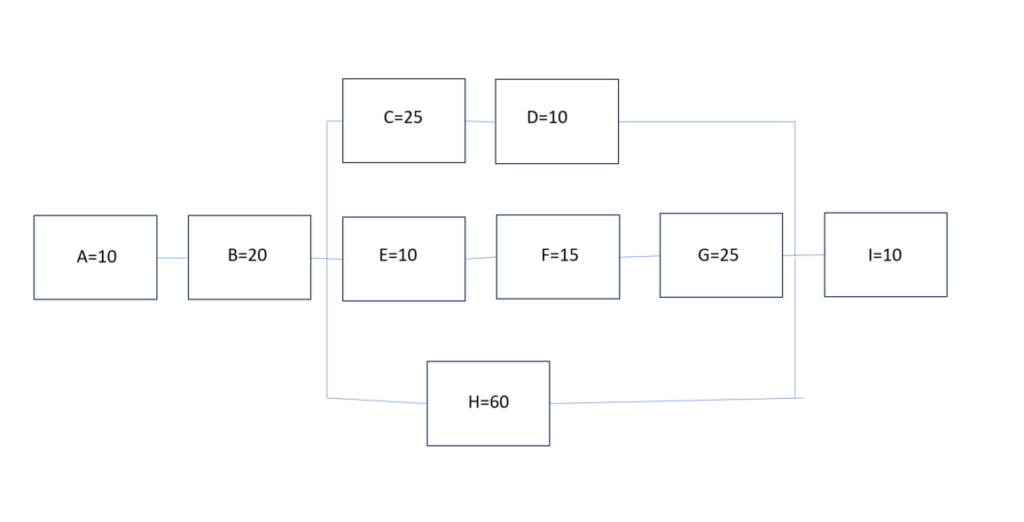
- Critical path is the longest path in the network. It is also the shortest possible time in which the project can be completed.
- Activities on the critical path should not slip. If they slip, the project will be delayed.
- A project can have more than one critical path. Two longest paths with the same duration. In such cases it is very difficult to manage.
- During the execution of the project, the critical path can change.

